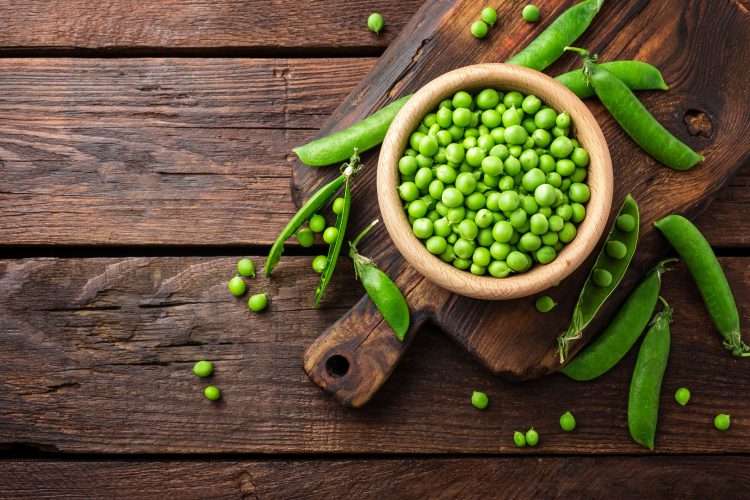The promise of pea and fava
- Like
- Digg
- Del
- Tumblr
- VKontakte
- Buffer
- Love This
- Odnoklassniki
- Meneame
- Blogger
- Amazon
- Yahoo Mail
- Gmail
- AOL
- Newsvine
- HackerNews
- Evernote
- MySpace
- Mail.ru
- Viadeo
- Line
- Comments
- Yummly
- SMS
- Viber
- Telegram
- Subscribe
- Skype
- Facebook Messenger
- Kakao
- LiveJournal
- Yammer
- Edgar
- Fintel
- Mix
- Instapaper
- Copy Link
Posted: 8 November 2021 | Inthuja Manickam, Pedro Martinez Noguera, Siddharth Sharan, Svenja Krause | No comments yet
Four researchers outline the benefits and food applications for pea and fava, as they highlight these two pulses’ nutritional and innovative qualities.


Although the ‘Green Revolution’ of the ‘60s significantly boosted the food supply and provided millions of people with calorie-rich foods, billions of people, even today, suffer from malnutrition in its two poles: obesity and hunger. There is thus a wide scientific consensus that a dietary shift is crucial to drive our food systems towards being healthier, fairer and more respectful with our planet.1 In this article, we explain why pulses can be part of the solution.
The term pulse refers specifically to any dry legume seed used as human or animal food. Interesting examples include peas and fava beans, which are increasingly receiving attention because of their high nutritional value, affordability, agronomic adaptability and culinary versatility. These benefits therefore make them very attractive food products and also a promising source of nutritious and functional food ingredients.
Advantages and application
Starting from the plant: the agronomic advantages
Peas and fava beans are tough crops that are able to grow well in diverse climates. Moreover, they are natural nitrogen-fixating plants that could be used in intercropping strategies to significantly reduce soil erosion and the use of fertilisers.2
Nutritional benefits of consuming peas and fava beans
One of the major advantages of peas and fava beans is the elevated level of protein (25-30 percent) with a high proportion of essential amino acids.3 Unlike animal proteins, pulse proteins are limited in sulphur-containing amino acids which can easily be compensated by consuming them in combination with cereal proteins. Such a combination of different plant-based proteins is a very promising approach to meet the overall need for dietary protein and essential amino acids.4
In addition to nutritious proteins, peas and fava beans also contain high contents of dietary fibre and resistant starch, which have the potential to impede digestion and may aid in satiety. Therefore, the two seeds are particularly suitable for diets in the management of obesity and diabetes.5 Moreover, they are low in fats and contain essential minerals and antioxidant bioactive compounds (eg, carotenoids and phenolic compounds). These latter compounds have long been reported to reduce the risk of cardiovascular disease and cancer.6
Product innovation
In addition to the nutritional benefits, pulses offer functional advantages as well, which can be exploited to generate diverse new food products. Functional properties are essential in food applications, as they govern how food ingredients interact with each other and how any final product behaves to render an appearance, texture, and taste that is acceptable/desirable by the consumers.7 Functional properties are often related to protein properties, which contribute to different solubility, wettability (in water or oil), colloidal stability (foams and emulsions), and/or rheology (gelation, adhesiveness, viscosity, elasticity).8
Both pea and fava ingredients serve as excellent functional agents for industrial food applications. Given the fat adsorption capacities of fava and pea proteins, they are used in meat alternatives to enhance flavour retention and palatability besides improving binding properties of meat patties.9 The foaming properties of fava and pea proteins make them desirable to be utilised in food applications such as beverages, whipped toppings and mousses.10
Pea flour and isolates are increasingly used in baked goods like cakes, bread and cookies, due to their emulsifying, foaming and water binding capacities to provide appealing textural properties.11-13 At the same time, they can also serve as an alternative to wheat, which can trigger allergies or intolerances in sensitive populations, and thus are an attractive option for the development of gluten-free products.11 Food products that require gelling properties such as yogurts and jams benefit from using fava bean proteins due to their gelling properties.14
Moreover, functional properties of ingredients vary depending on how they are produced, so by understanding how and why these change, one can tailor the production method to the desired function-application.15 Hence, as highlighted, legumes are indeed promising candidates as main ingredients in novel foods as well as substitutes of animal-based ingredients for a myriad of food applications.


Figure 1: Main benefits of pea and fava beans with a focus on nutrition, functionality and agronomic sustainability
Pulses, including peas and fava beans, have a great potential in industrial food applications, especially in the field of nutrition and functionality. However, not everything that glitters is gold. The main challenges hampering their use in innovative food products are their antinutritional factors and off-flavours (bitter and beany). Scholars have reported these as perceived undesirable by European consumers.16 So even though scientific research is paving the way to solve these technical issues, there is a need for more support and action in this area.
As presented, industrial processing can have a hugely positive impact on these qualities. It can enhance nutritional, functional and sensory properties as well as reduce anti-nutritional factors.17 Moreover, researchers also recognise the importance that pulses have had historically in numerous food cultures, where they have been used as whole ingredients in dishes such as Indian lentil curries, Mexican charro beans and Italian Cannellini bean soup.
Research networks like FOODENGINE, funded by the European Commission under the Horizon 2020 programme, contribute enormously to advancing scientific knowledge in this field. Aside from stressing the significance of this research and the potential of pulses in the future of sustainable food, we encourage you to rethink their status in your daily diet. We can do better!
Acknowledgement
The authors gratefully acknowledge the financial support from the European Union’s Horizon 2020 Research & Innovation Programme under the Marie Skłodowska-Curie Grant Agreement N° 765415 (FOODENGINE).
References
- Thavarajah, D., McSwain, M., Johnson, C.R., Kumar, S., & Thavarajah, P. (2019). Pulses, Global Health, and Sustainability: Future Trends. In Dahl, W.J. (Ed.), Health Benefits of Pulses, 1-17. Cham: Springer International Publishing. https://doi.org/10.1007/978-3-030-12763-3_1
- Maphosa, Y., & Jideani, V.A. (2017). The Role of Legumes in Human Nutrition, Functional Food – Improve Health through Adequate Food. London, UK: IntechOpen. https://doi.org/10.5772/intechopen.69127
- Gorissen, S. H., Crombag, J. J., Senden, J. M., Waterval, W. H., Bierau, J., Verdijk, L. B., & van Loon, L. J. (2018). Protein content and amino acid composition of commercially available plant-based protein isolates. Amino acids, 50(12), 1685-1695. https://doi.org/10.1007/s00726-018-2640-5
- Hertzler, S. R., Lieblein-Boff, J. C., Weiler, M., & Allgeier, C. (2020). Plant proteins: Assessing their nutritional quality and effects on health and physical function. Nutrients, 12(12), 3704. https://doi.org/10.3390/nu12123704
- Polak, R., Phillips, E.M., & Campbell, A. (2015). Legumes: Health Benefits and Culinary Approaches to Increase Intake. Clinical Diabetes, 33(4), 198. https://doi.org/10.2337/diaclin.33.4.198
- Aune, D., Keum, N., Giovannucci, E., Fadnes, L. T., Boffetta, P., Greenwood, D.C., … & Norat, T. (2018). Dietary intake and blood concentrations of antioxidants and the risk of cardiovascular disease, total cancer, and all-cause mortality: a systematic review and dose-response meta-analysis of prospective studies. The American journal of clinical nutrition, 108(5),1069-1091. https://doi.org/10.1093/ajcn/nqy097
- Awuchi, C.G., Igwe, V.S., & Echeta, C.K. (2019). The Functional Properties of Foods and Flours. International Journal of Advanced Academic Research, 5(11), 139-160.
- Sharan, S., Zanghelini, G., Zotzel, J., Bonerz, D., Aschoff, J., Saint-Eve, A., & Maillard, M.-N. (2021a). Fava Bean (Vicia faba) For Food Applications: From Seed to Ingredient Processing and Its Effect on Functional Properties, Antinutritional Factors, Flavor, and Color. Comprehensive Reviews in Food Science and Food Safety, 20(1), 401-428. https://doi.org/10.1111/1541-4337.12687
- Bessada, S.M.F., Barreira, J.C.M., & Oliveira, M.B.P.P. (2019). Pulses and Food Security: Dietary Protein, Digestibility, Bioactive and Functional Properties. Trends in Food Science & Technology, 93, 53-68. https://doi.org/10.1016/j.tifs.2019.08.022
- Boye, J., Zare, F., & Pletch, A. (2010). Pulse Proteins: Processing, Characterization, Functional Properties and Applications in Food and Feed. Food Research International, 43(2), 414-431. https://doi.org/10.1016/j.foodres.2009.09.003
- Krause, S., Keller, S., Hashemi, A., Descharles, N., Bonazzi, C., & Rega, B. (2021). From flours to cakes: Reactivity potential of pulse ingredients to generate volatile compounds impacting the quality of processed foods. Food Chemistry, 131379. https://doi.org/10.1016/j.foodchem.2021.131379
- Miñarro, B., Albanell, E., Aguilar, N., Guamis, B., & Capellas, M. (2012). Effect of Legume Flours on Baking Characteristics of Gluten-Free Bread. Journal of Cereal Science, 56(2), 476-481. https://doi.org/10.1016/j.jcs.2012.04.012
- Sahagún, M., & Gómez, M. (2018). Influence of Protein Source on Characteristics and Quality of Gluten-Free Cookies. Journal of Food Science and Technology, 55(10), 4131-4138. https://doi.org/10.1007/s13197-018-3339-z
- Raikos, V., Neacsu, M., Russell, W., & Duthie, G. (2014). Comparative Study of the Functional Properties of Lupin, Green Pea, Fava Bean, Hemp, and Buckwheat Flours as Affected by PH. Food Science & Nutrition, 2(6), 802-810. https://doi.org/10.1002/fsn3.143
- Sharan, S., Zotzel, J., Stadtmüller, J., Bonerz, D., Aschoff, J., Saint-Eve, A., … & Orlien, V. (2021b). Two Statistical Tools for Assessing Functionality and Protein Characteristics of Different Fava Bean (Vicia faba L.) Foods, 10(10), 2489. https://doi.org/10.3390/foods10102489
- Faber, I., Henn, K., Brugarolas, M., & Perez‐Cueto, F. J. (2021). Relevant characteristics of food products based on alternative proteins according to European consumers. Journal of the Science of Food and Agriculture. https://doi.org/10.1002/jsfa.11178
- Multari, S., Stewart, D., & Russell, W.R. (2015). Potential of Fava Bean as Future Protein Supply to Partially Replace Meat Intake in the Human Diet. Comprehensive Reviews in Food Science and Food Safety, 14(5), 511-522. https://doi.org/10.1111/1541-4337.12146
About the authors


Svenja Krause
Svenja Krause is a PhD researcher at INRAE/AgroParisTech (France) under the consortium of the Marie Curie Training Network FOODENGINE. In close collaboration with Cargill R&D Centre Europe (Belgium) and KU Leuven (Belgium), she is evaluating the application potential of pulse ingredients in plant-based foods, with focus on aroma development, product structuration and in vitro digestibility. Her project has been supervised by Dr Catherine Bonazzi and Dr Barbara Rega (INRAE/Université Paris-Saclay).


Inthuja Manickam
Inthuja Manickam is a research fellow at INRAe, France under the consortium of the Marie Curie Training Network FOODENGINE. Her work focuses on colour evolution of plant-based ingredients during production in collaboration with Dohler GmbH (Germany). Her project is supervised by Professor Marie-Noelle Maillard and Dr Anne Saint-Eve (INRAE/Université Paris-Saclay in France).


Pedro Martinez Noguera
Pedro Martinez Noguera is a research fellow and part of the Marie Curie Training Network FOODENGINE. He works at INRAe in Paris (France) in collaboration with Cargill R&D Center Europe (Belgium) and his work focuses on investigating flavour and aroma changes of foods made with different pea ingredients. His project is supervised by Dr Barbara Rega and Dr Catherine Bonazzi (INRAE/Université Paris-Saclay in France).


Siddharth Sharan
Siddharth Sharan is undertaking a PhD on the functional and sensory properties of fava bean ingredients for industrial food applications. His work is funded by the ITN FOODENGINE network from Horizon 2020. The PhD is supervised by Professor Marie-Noelle Maillard and Dr Anne Saint-Eve (INRAE/Université Paris-Saclay in France), and also by Dr Jens Zotzel, Dr Daniel Bonerz and Dr Julian Aschoff (Döhler GmbH in Germany), along with a collaboration with Dr Vibeke Orlien (University of Copenhagen in Denmark).









